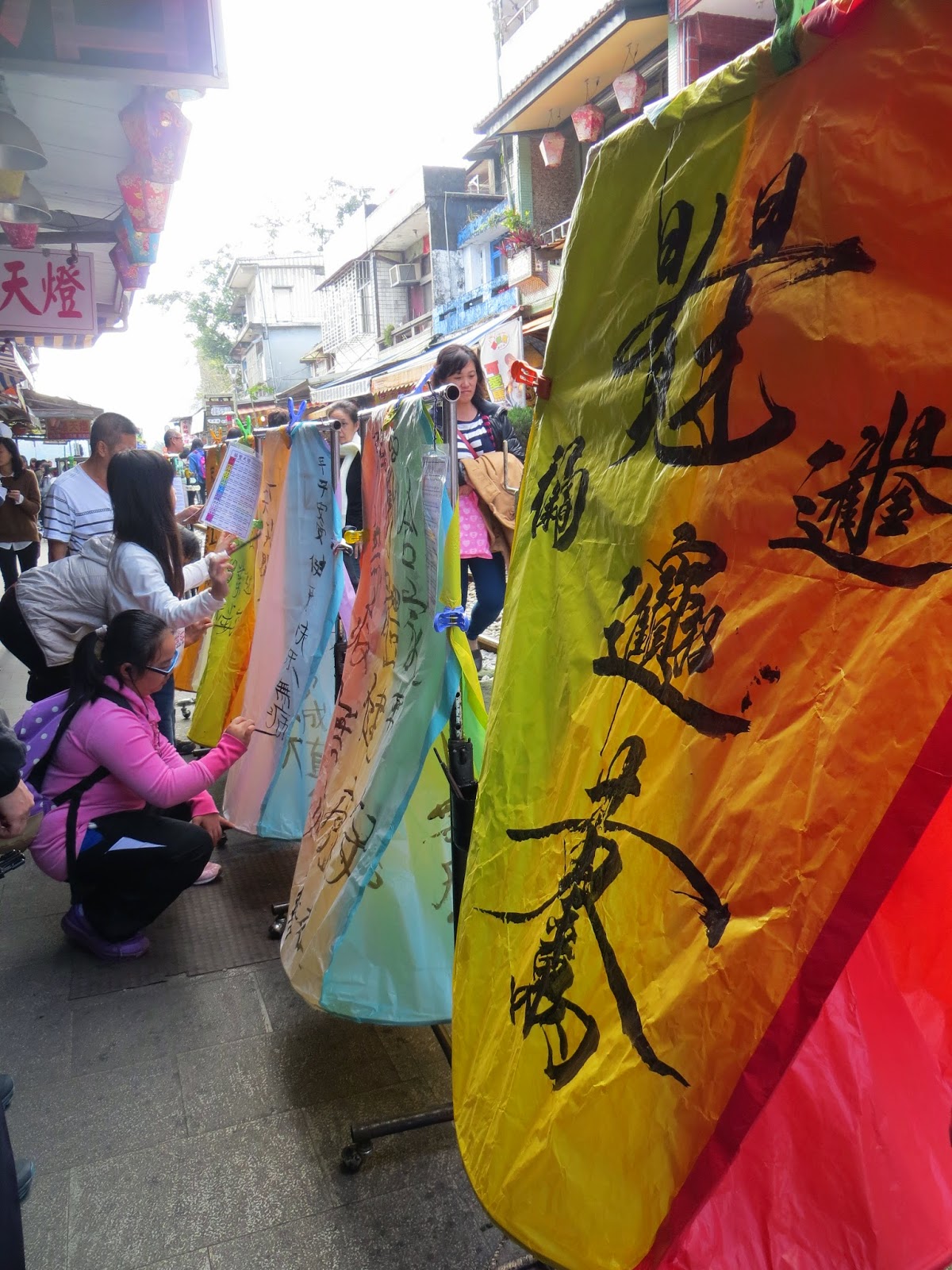The Pingxi Railway Line is a fun day trip from Taipei. This 12 kilometer historic railroad connects a few traditional mining towns, and now has become a tourist destination, famous for sky lanterns and picturesque scenery.
It's fairly simple to reach the beginning of the line from Taipei. We took a 40-minute train ride from Taipei Main Station to Ruifang Station. At Ruifang, we bought a one-day pass for the Pingxi Line, which cost only $2 USD. The train runs by the hour, so you can get off at any one of the stops, and time your trip so that you come back to the station at an hourly interval.
We started our trip at a little town called Shifen. It's known for Shifen Old Street, as well as a nearby waterfall. Unfortunately, the waterfall is currently closed because its platform is being renovated. However, we managed to have fun wandering up and down Shifen Old Street. People are allowed to walk among the train tracks, and officials will blow the whistle to warn of the train's arrival.
There are many shops that sell paper sky lanterns. One fun activity to do is to buy a sky lantern (between 150 to 200 TWD, about $6-7 USD), and write your wishes on the paper. Then you light a fire underneath the lantern, and release it up into the sky.
I loved all the bright colors. All along the street, tourists were painting their wishes onto their sky lanterns, and then taking turns releasing them into the air.
Right next to the train station at Shifen is a very nice suspension bridge over the river. We had about 15 minutes left before the train came so we walked across the bridge and enjoyed the nice views. Because we did not go to the waterfall, about a half an hour walk away, one hour was the perfect amount of time to spend in Shifen before hopping on the train again.

We then rode the train to the last stop on the line, Jingtong. Jingtong is a similar small mining town, and it also has an Old Street with traditional shops and restaurants. It is actually very small, and there was not too much to do there. One attraction, the historic Japanese-style train station, was actually under renovation. We did not have the best timing on this trip!
We relaxed at a nice viewing platform, decorated with these hanging wooden charms.
There is a very cute cafe called Farmers Coffee at this platform, and they sell various types of thick toast with spread as well as specialty lattes. I had to try their sea salt latte. The sea salt is blended into the foam, and somehow gives the latte an almost chocolatey taste. It was delicious!
We sat at the benches that overlooked the gorgeous valley below. The red bridge that transverses the valley is called Lover's Bridge.
Jingtong is actually not too far from Pingxi, the namesake of the line. We walked about half an hour back along the tracks to Pingxi. Unfortunately I forgot to take photos at Pingxi. It's a town with a similar atmosphere, though the Old Street at Pingxi is a bit bigger and there were more businesses than Shifen or Jingtong.
We unfortunately had to skip the last major destination on this train line, called Houtong. Houtong is "Cat Town," because it is known for all the stray cats wandering around the streets in a surreal, Murakami-like scene. We left the area around 5PM, and got to Taipei in time for dinner.
Pingxi Railway Line isn't a must-see destination if you are only in Taiwan for a few days, but I think it's worth a visit for a longer stay, especially if you want a glimpse of an older, more traditional lifestyle. There are also several mining and coal museums if you have an interest in that area.























































